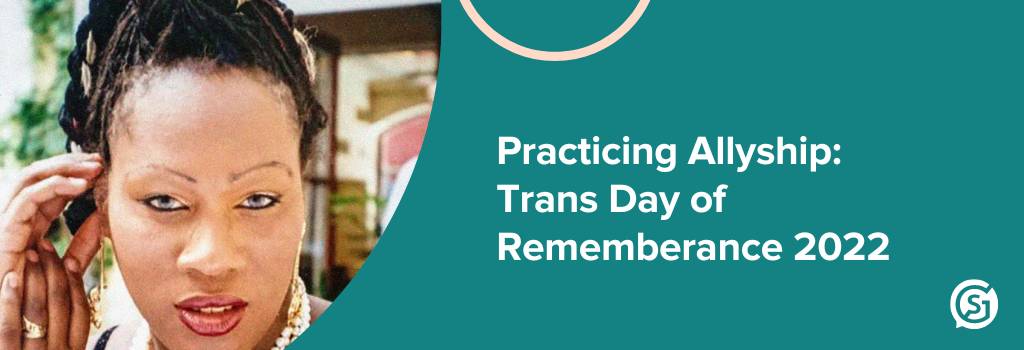The Center for Public Integrity shows the unsurprising fact that being transgender in the US is more difficult than being cisgender, and they’ve come with receipts. We’ll highlight just one of the many sad facts in this report:
“Three out of 10 transgender adults lost their jobs in the last month or live with someone who did. By comparison, about one in 10 cisgender men reported job loss in their household recently. Transgender adults also reported losing their job at a 50% higher rate than people within the broader LGBTQ community.”
In honor of Trans Day of Remembrance 2022 on Sunday, we’re remembering why and how the day started over 20 years ago and how you can be an ally to transgender people. Rita Hester was a Black, trans, woman living in Boston in the 1990s. She was the victim of a hate crime for being trans. On the one-year anniversary of her murder, two activists organized the first Transgender Day of Remembrance in her honor on November 28, 1999. Today, anti-trans violence on record is even more widespread than it was when Rita Hester was killed. Rita Hester has gradually slid out of memory. This could be linked to the cruel reality that there are simply so many names we must remember, so many members of our global family taken from us merely for who they are, and more every day. This year we remember her and we commit her (and so many others) to ongoing action in her (and their) memory and honor.
Background
Rita Hester was a Black trans woman living in Boston in the 1990s. She was murdered in 1998- the victim of a hate crime for being trans. Initial reporting consistently misgendered and deadnamed her. Inspired by Rita’s murder, trans activist Gwendolyn Ann Smith created a web project called Remembering Our Dead to honor and memorialize Rita and other trans victims of homicide. Smith went on to found the Transgender Day of Remembrance in 1999. These projects aimed to give trans victims back their names and identities.
Today, anti-trans violence on record is even more widespread than it was when Rita Hester was killed, but she has gradually slid out of mainstream memory. This may be linked to the fact that Rita was Black and trans, or it might be the cruel reality that there are simply so many names we must remember. No matter what, there is no excuse to forget who she was.
Rita was a big personality and loved traveling. She had a pet cat and a pet boa constrictor. She loved to laugh, gossip, and cook. She was always up for dancing and having a good time. This year we remember her, and we commit to ongoing action in her memory.
Why Practice Allyship
Practicing allyship is an important part of an individual’s learning journey. We practice allyship because it honors a person’s humanity and experience. When it comes to the trans community, it’s imperative that we start to understand that not everything or everyone is as we perceive. All too often, we’re afraid of making mistakes when it comes to practicing allyship. If you’ve found yourself wondering how to effectively and inclusively be an ally for the trans community, read on!
Using an Intersectional Lens
Black transgender and gender non-conforming individuals are some of the most discriminated against. The Black, Indigenous, and other non-Black people of color communities already experience rates of discrimination higher than their white counterparts. However, when structural racism and anti-trans bias are added to the mix, the rate of discrimination is devastating. It’s paramount that we use an intersectional lens when practicing allyship.
How to Practice Allyship:
- Don’t make assumptions about others’ gender identity, sexual orientation, or pronouns.
- If you’re not sure what pronouns someone uses, proactively share your pronouns and listen.
- Correct someone when they assume someone’s gender or use the wrong pronouns for someone.
- If you make a mistake, apologize, correct yourself, and move on.
- Don’t ask a trans person what their ‘real’ name is.
- Don’t ask a trans person about their genitals, body parts, or surgical status.
- Respect how someone chooses to self-identify.
- Support unisex / all-gender restrooms.
- Challenge anti-trans jokes or comments.
- Donate to organizations that support trans folks.
- Remember that allyship is active. You may not know everything, but you can actively work to learn and do better.
Where to Start:
Follow these accounts on Instagram:
Listen to these podcasts:
Read these books:
- All The Things We Don’t Talk About by Amy Feltman
- Transgender 101 by Nicolas Teich
- Black on Both Sides by C. Riley Snorton
